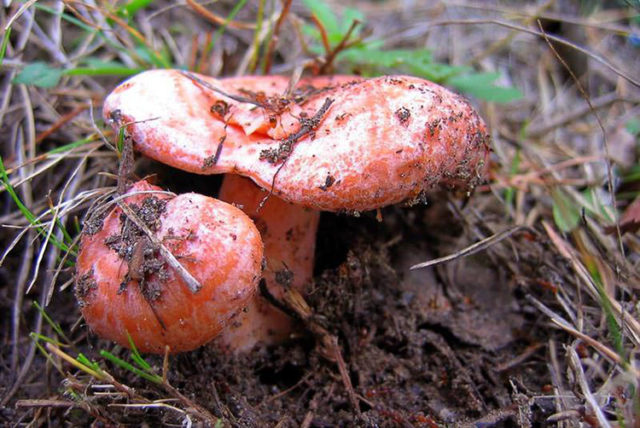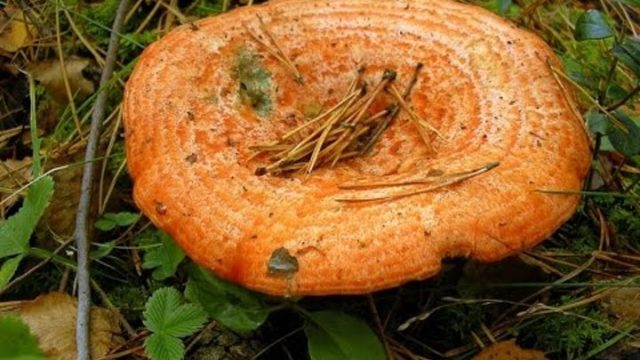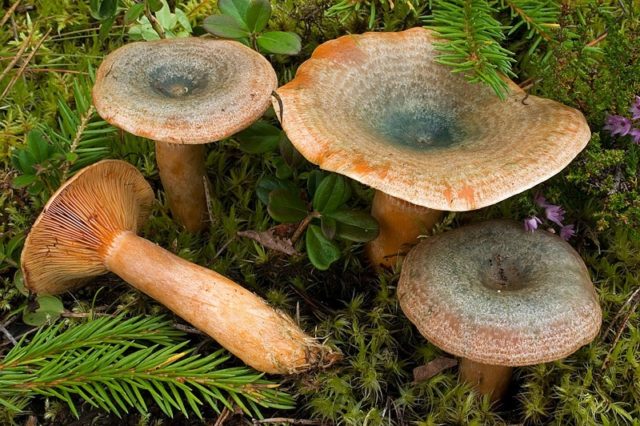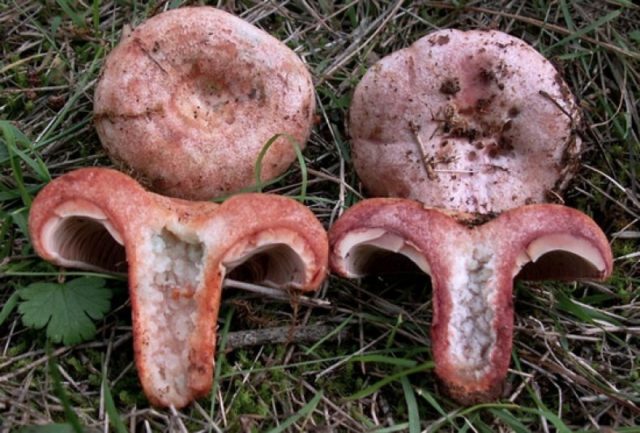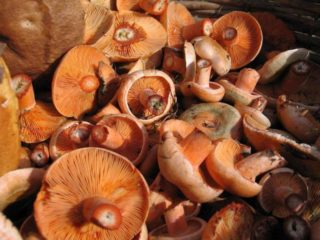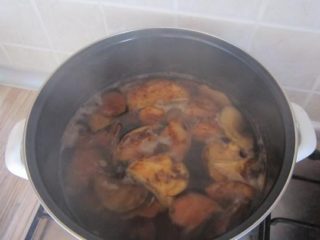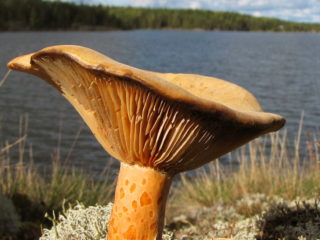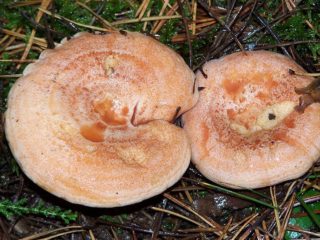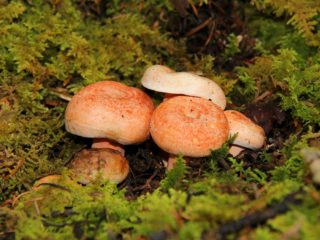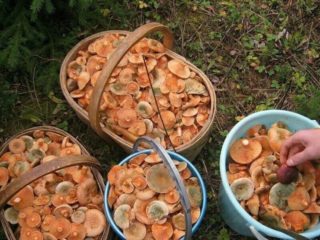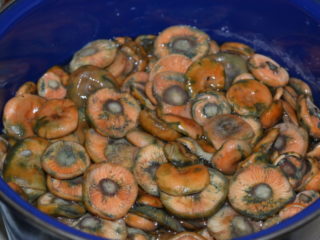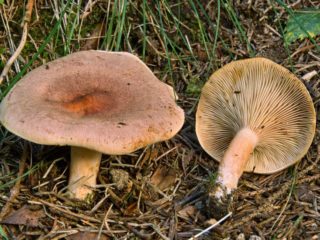Content
Red camelina is an edible and very tasty mushroom. It does not contain toxic substances and, if properly processed, will be a good addition to many dishes.
Where do red saffron milk caps grow?
Red saffron milk cap belongs to the Russula family and is not very widely distributed in Russia. Most often it can be found in coniferous forests and mountainous areas, and it usually grows in small groups of several fruiting bodies. The fruiting season is late summer and early autumn; between August and September it can be seen in greatest quantities.
What do red saffron milk caps look like?
A mushroom from the genus Milky has a cap from 3 to 10 cm in diameter, flattened in young fruiting bodies and funnel-shaped in adults. The edges of the cap are slightly curled, the skin is moist and sticky to the touch. The underside of the cap is covered with thin plates of pinkish, ocher or deep red colors, depending on age. The plates themselves can go quite deep down the stem. The color of the cap itself is usually reddish-orange; occasionally there are blood-red saffron caps with a barely noticeable greenish tint.
The red camelina does not rise much above the ground; its leg reaches an average of 6 cm. Towards the base it narrows slightly, and its surface is often covered with a powdery coating. Photos and descriptions of red mushrooms show that the color of the leg is usually pinkish-orange or violet-lilac; in young mushrooms it is dense and fleshy, and in adults it is hollow from the inside.
If you break a red saffron milk cap, you will see dense and fragile beige flesh with red spots. At the site of the fracture, milky juice of a reddish hue is released.
Is it possible to eat red saffron milk caps?
The forest product belongs to the first edible category. This means that it is allowed to be eaten, and even long and careful processing is not required - there are no toxic substances in the pulp.
Taste qualities of mushrooms
Red saffron milk cap has a very pleasant taste and good dense consistency. In cooking, it is customary not only to salt it, but also to boil it, marinate it, and fry it. The red mushroom is suitable for drying; in this case, it can be preserved for a long time and enjoy its beneficial qualities and taste several months after collection.
Benefits and harm to the body
Red camelina has a rich chemical composition, including vitamins, microelements and antioxidant compounds. It can bring great benefits to human health.
Red saffron milk allows you to:
- improve digestion - the product helps remove toxic substances from the body;
- strengthen the immune system, vitamins in the composition make a person more resistant to viral and infectious diseases;
- improve the condition of the skin - the beneficial substances in the composition promote the renewal of epidermal cells, it is not without reason that the product is used to heal cuts and burns;
- increase overall endurance, red camelina contains a lot of proteins and amino acids, so it is considered a very nutritious product.
It is especially worth noting the substance lactarioviolin in the pulp; this natural antibiotic has anti-tuberculosis properties. Lactarioviolin is used by official pharmacology to create drugs aimed at treating serious illnesses.
Of course, in some cases, red mushroom can cause harm to the body. It is not recommended to use it if you are prone to constipation, have chronic problems with the gallbladder, or have severe liver damage. Stale specimens can cause great harm - before consuming, you must make sure of their high quality, especially if we are talking about a purchased product.
False doubles
It is almost impossible to confuse red saffron milk cap with a dangerous poisonous one. However, it has a strong resemblance to other representatives of its genus, so it is important to study the photo of the red camelina mushroom and its doubles.
Real saffron milk cap
Pine, pine or real saffron milk cap is a completely edible mushroom with excellent taste. It is very similar in structure to red and also has a mucous red or white-orange cap with a depression in the center and a cylindrical stem.
But at the same time, real saffron milk cap is usually larger in size and lighter in color than red. In addition, the real mushroom is much more widespread and grows in coniferous forests throughout Russia from the European part to Siberia.
Spruce saffron milk cap
The spruce mushroom is another tasty edible that can be confused with the red one. It also has a convex cap when young and a funnel-shaped cap in adult mushrooms, the diameter of which can reach 8 cm. The skin on the cap of the spruce mushroom is slippery and sticky, the stem rises above the ground by an average of 6 cm.
The color of the spruce tree is usually red-orange, and in this way it looks like a red saffron milk cap. But in the spruce mushroom you can notice a pronounced greenish tint. The spruce tree is found everywhere in forests and is far from being as rare as its red counterpart.
Collection rules
The bulk of red species appear in coniferous forests closer to autumn - at the end of August and beginning of September. It is better to go for mushrooms after rainy days - in damp weather they grow especially quickly and abundantly. When looking for red mushrooms, you need to carefully look at your feet; thanks to their orange color, the mushrooms often blend in with the falling autumn leaves.
It is necessary to collect the red species in clean forests, located away from noisy highways, railways and industrial facilities. Since mushroom pulp easily accumulates toxins that grow in a disadvantaged area, the fruiting bodies can be harmful.
How to cook red saffron milk caps
The culinary uses of red saffron milk caps are very wide; they can be eaten in almost any form. Since mushrooms do not have a bitter taste, they do not need to be soaked before processing; just peel and rinse under cold water:
- Most often, red saffron milk caps are boiled - this process takes 15 minutes after boiling salted water. Boiled mushrooms are added to salads or eaten as a snack with salt.
- They can also be fried and stewed with meat and vegetables, added to soup or even as a filling for pies.
- Sometimes they are consumed together with apples - the combination is unusual, but pleasant.
- The classic recipe is red saffron milk caps with potatoes and sour cream.
Salting and pickling of red saffron milk caps is popular - this treatment allows you to preserve them for the winter. The collected mushrooms can be dried and used after a long time for culinary or medicinal purposes.
Conclusion
Red saffron milk cap is a rather rare, but very tasty noble mushroom. It causes virtually no harm to health, but the benefits from it can be very great, especially if the norms of use are observed.

